
If you wanna learn more about portrait drawing, check out my “Portrait Fundamentals Made Simple” course.
It’s a very beginner-friendly course that walks you through all the basics of portraiture, from constructing a basic head, facial proportions, drawing the features, and finally drawing a realistic portrait step-by-step.
Lesson Details
Step 1 – Drawing A Regular Hexagon
The first step to drawing an impossible hexagon is to draw a regular hexagon. Here’s a very easy way to draw a perfect hexagon.
Mark a dot in the middle of your paper. This will be the center of your impossible hexagon.
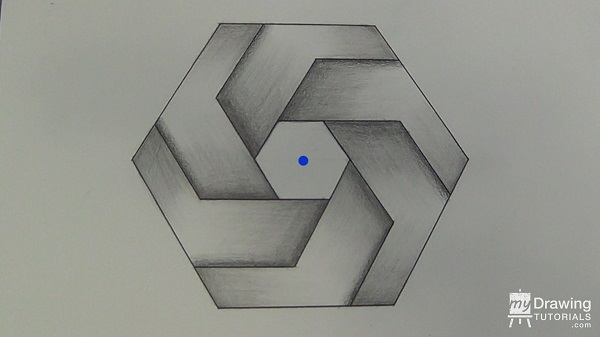
Use a compass to draw a circle around this dot. The six points of our hexagon will evenly spaced along this circle.
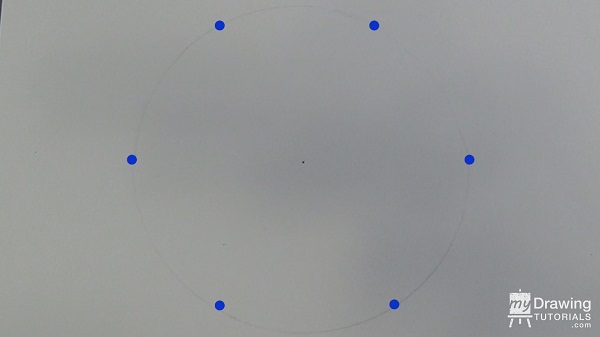
To find the first two points, simply draw a horizontal line through the center dot to the circle. Mark the two points of contact between the line and the circle.
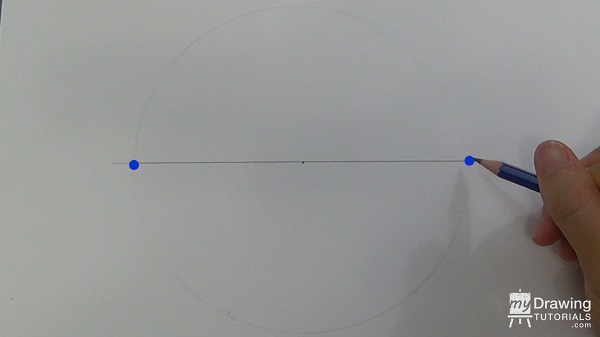
Now let’s find the other 4 points. Set your compass to the same width as the radius of the circle.
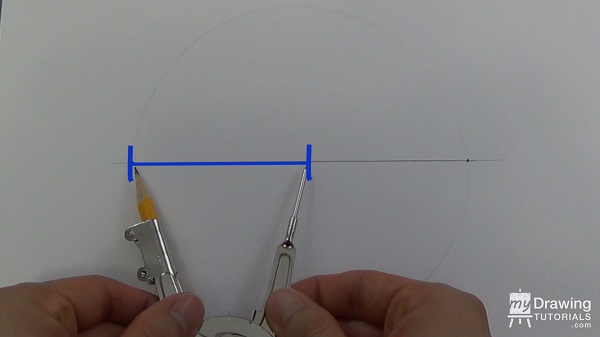
Then pivot off one of the points and mark the two intersection between the compass and the circle.
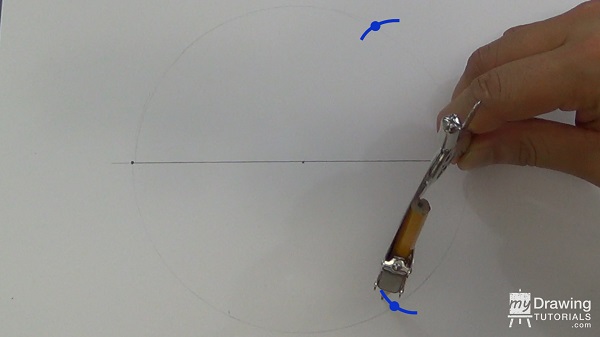
Repeat this for the other side.

These intersections are the 4 remaining points of our hexagon.
Now just connect these points to form the shape.
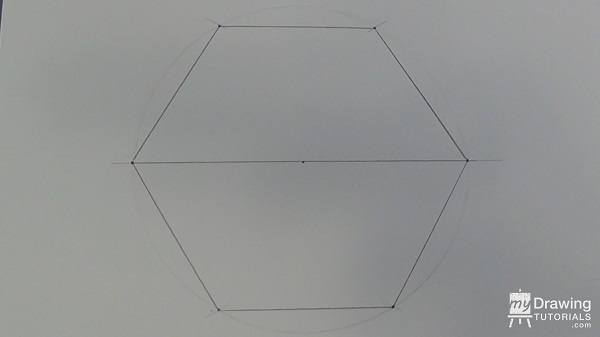
Next, let’s draw a smaller hexagon inside this one. To do this, simply draw all the sides of the big hexagon again, except move them inward so that they form a new hexagon.
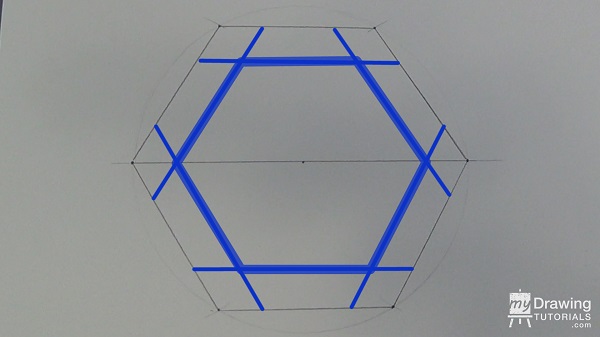
Be sure to keep the spacing between the lines uniform through out.
Ok, so there’s our medium hexagon.
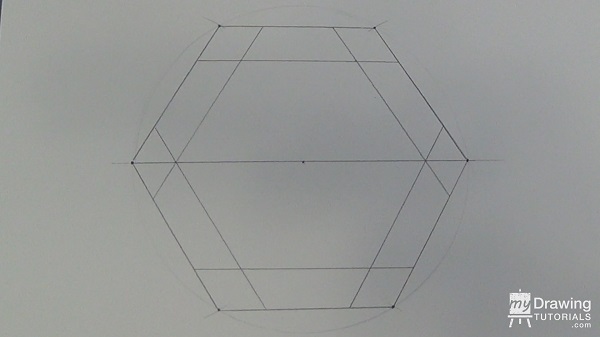
Now let’s repeat the process and draw yet another hexagon inside this one.
Just to make it interesting, I’ll make the spacing a bit bigger this time, so I’ll use the width of my ruler to measure things out.
And there’s the small hexagon.

Step 2 – Inking The Impossible Hexagon
Next, let’s ink in the large and small hexagon, because we know for sure these are the lines we want to keep.
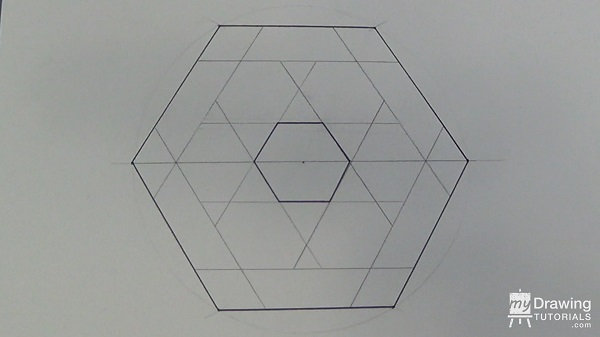
Now let’s ink in the rest of the drawing. There’s a lot of lines here so it can get a bit confusing.
The best way to think about this is to imagine that you are trying to get from the large hexagon to the small hexagon, using these roads.
Here’s what I mean…
Let’s start with this corner.
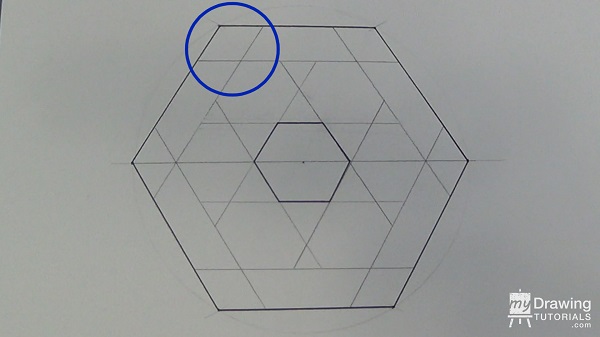
Here you have your choice of two roads.
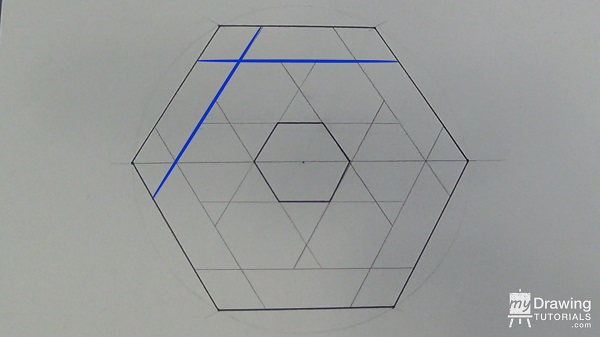
For the first one, it doesn’t matter which one you pick. So let’s just go with this one.
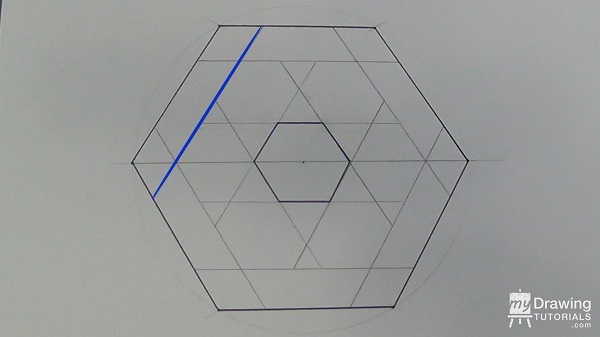
Follow this road down until you reach the far edge of the small hexagon.
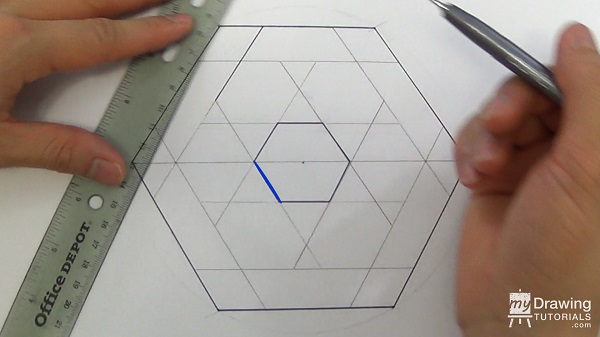
Then make a turn to connect to it. And that’s it.
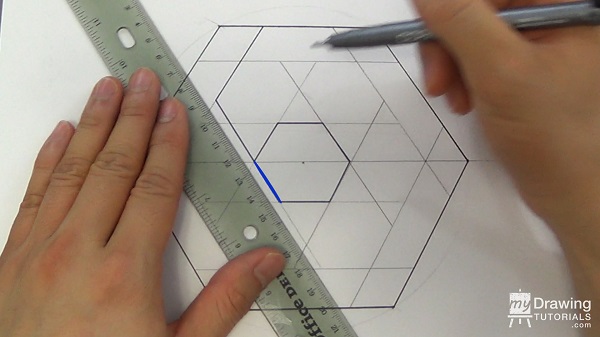
Now let’s do this corner.
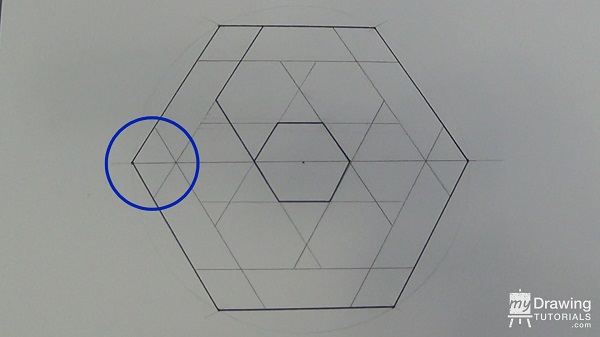
Again, we have a choice of two roads.

But since this one is already taken…
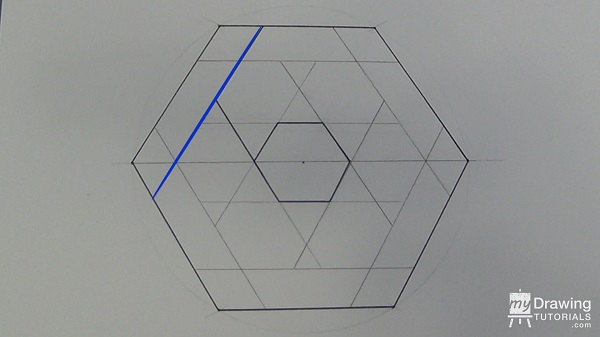
…we’ll have to use this one.
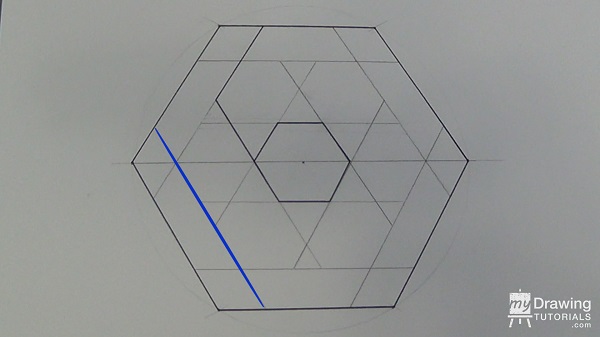
Once again, follow this road down until you get to the far edge of the small hexagon.
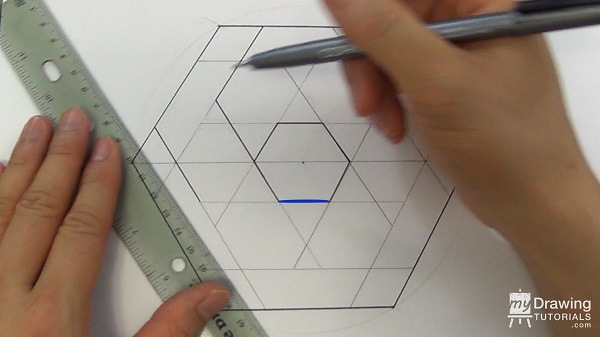
And then make a turn to connect to it.
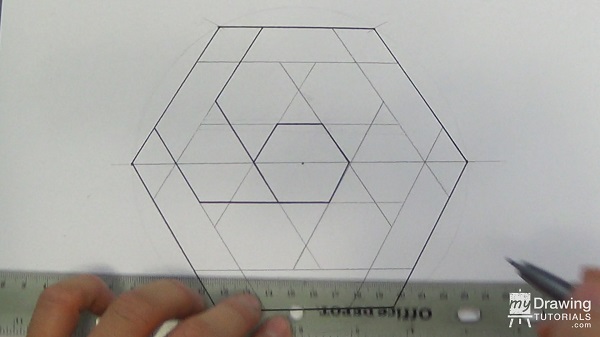
Now let’s repeat this process for the other four corners.
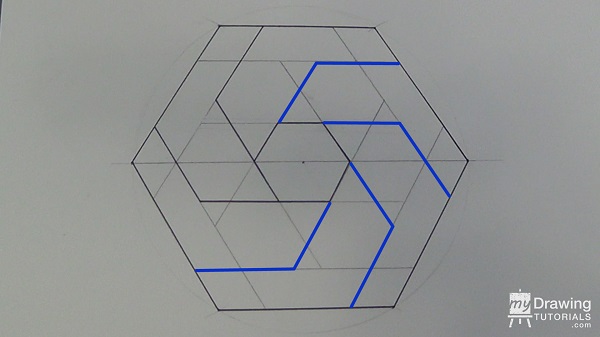
Once you’re done, just erase the pencil guidelines to reveal our impossible hexagon.
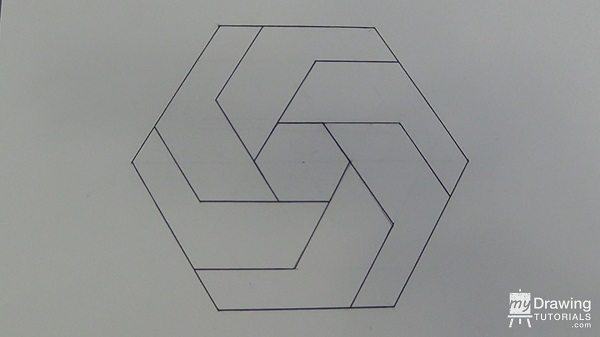
Step 3 – Shading
Then I’ll use a 2B & 4B pencil to add a gradation at the 6 inner corners of the shape.

And I’ll also add a gradation at the 6 outer corners as well.
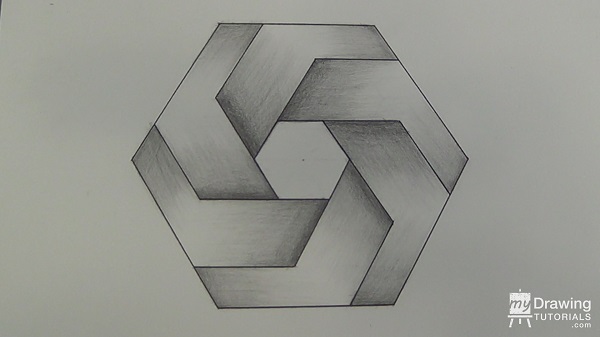
And lastly, I’ll use a 4B pencil to add a hard shadow under these lines, in order to create the illusion that the parts are overlapping each other.
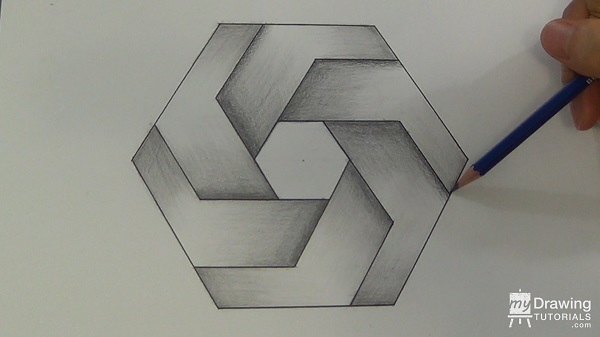
And we’re all done!

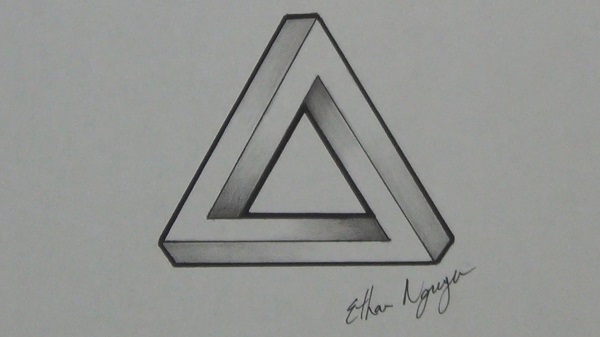


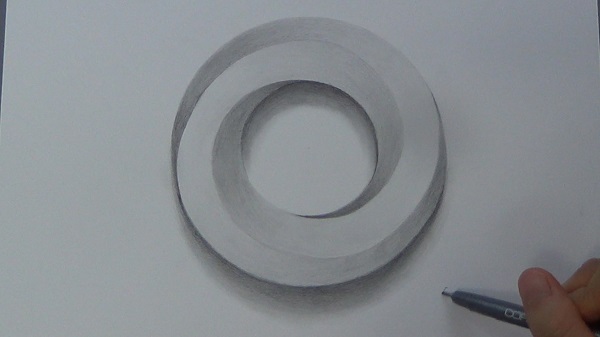




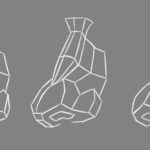

Thanks for the great video. I used my Hexagon as a base for my Zentangle and more “tile”. If you would like to see it, it’s on my blog at:
vaversproductions.blogspot.com
Renate
Wow, that looks awesome!
I truly enjoy how you teach drawing. Your directions are very clear and easy to follow. All my life I’ve liked to doodle, but I always felt I didn’t have any art talent. Going through your videos, my drawing has improved considerably. I won’t be another Grandma Moses, but I am enjoying drawing more than I ever have. Thank you Ethan.
I made this one exactly and it’s not impossible and to give it an Illusion at the center focus point I kept going around in the same pattern over and over and it works it actually works!